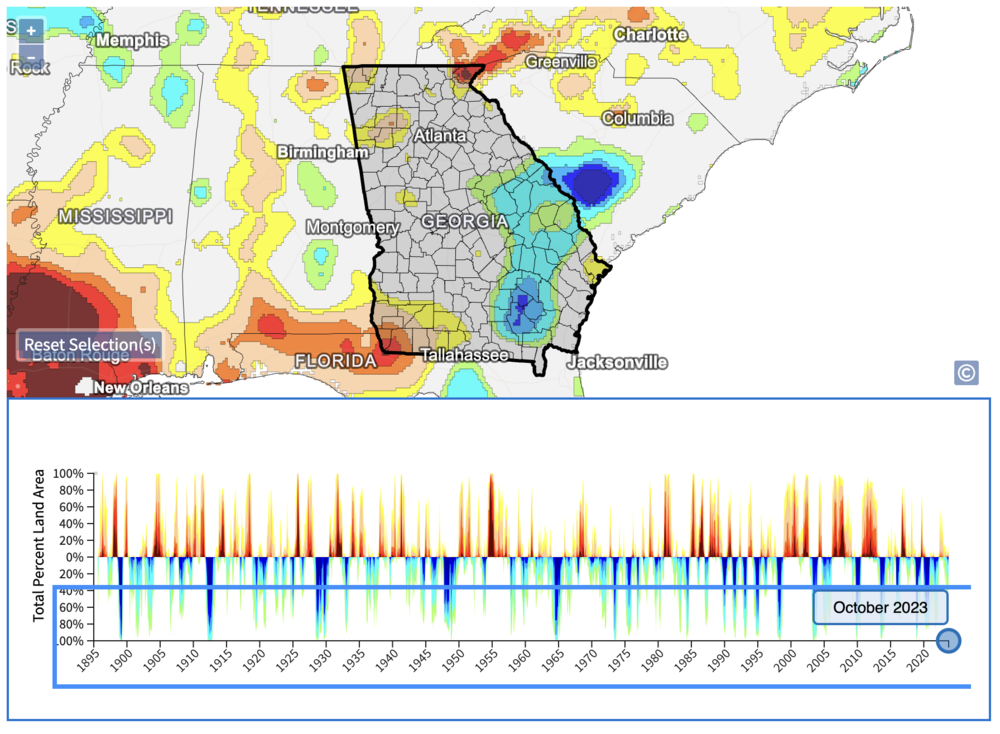
Section Branding
Header Content
This map shows every U.S. drought since 1895. Where does Georgia's current dry spell rank?
Primary Content
Rain is in the forecast for some parts of the state this week, but it's safe to say Georgia is dry — and may remain dry for at least the rest of the month.
September 2023 ranked only the 37th driest month in Georgia since data collection began in 1895. But the precipitation outlook for the state predicts drought conditions will persist or form in nearly half of Georgia's counties in November and beyond.
The National Integrated Drought Information System, part of the National Oceanic and Atmospheric Administration, uses data from more than a century of weather patterns to make predictions about how dry a region will become during a period of less frequent or absent rainfall.
What determines drought conditions?
NOAA describes drought as "an imbalance between water supply and water demand." This is not a reference to the water the flows from your faucet, but from the sky.
The Standardized Precipitation Index (SPI) measures water supply, specifically precipitation. SPI captures how observed precipitation (rain, hail, snow) deviates from the climatological average over a given time period — in this case, over the nine months leading up to the selected date.
Red hues indicate drier conditions, while blue hues indicate wetter conditions. Click here to compare Georgia droughts between 1895 and present day.

Drought prediction is useful for more than just determining whether or not one needs to carry an umbrella. It is an important tool for the states agriculture and farming industries.
The Georgia Crop Progress and Condition report demonstrates how just three weeks without rain can affect the soil and a dozen of the state's leading crops this seaons, from peanuts and pecans to cotton and soybeans.
On Nov. 3, the U.S. Small Business Administration announced federal Economic injury Disaster Loans for small businesses, cooperatives and nonprofit organizations in Georgia with economic losses due to drought conditions that began Oct. 24, 2023.
The declaration included Catoosa, Chattooga, Dade and Walker counties, and the contiguous counties of Floyd, Gordon and Whitfield in Georgia.
Are drought conditions caused by climate change?
Climate change is expensive, deadly and preventable, according to the new National Climate Assessment, what NPR called, "the most sweeping, sophisticated federal analysis of climate change compiled to date."
"Released every five years, the National Climate Assessment is a congressionally mandated evaluation of the effects of climate change on American life," Morning Edition reported. "This new fifth edition paints a picture of a nation simultaneously beset by climate-driven disasters and capable of dramatically reducing emissions of planet-warming gasses in the near future."


